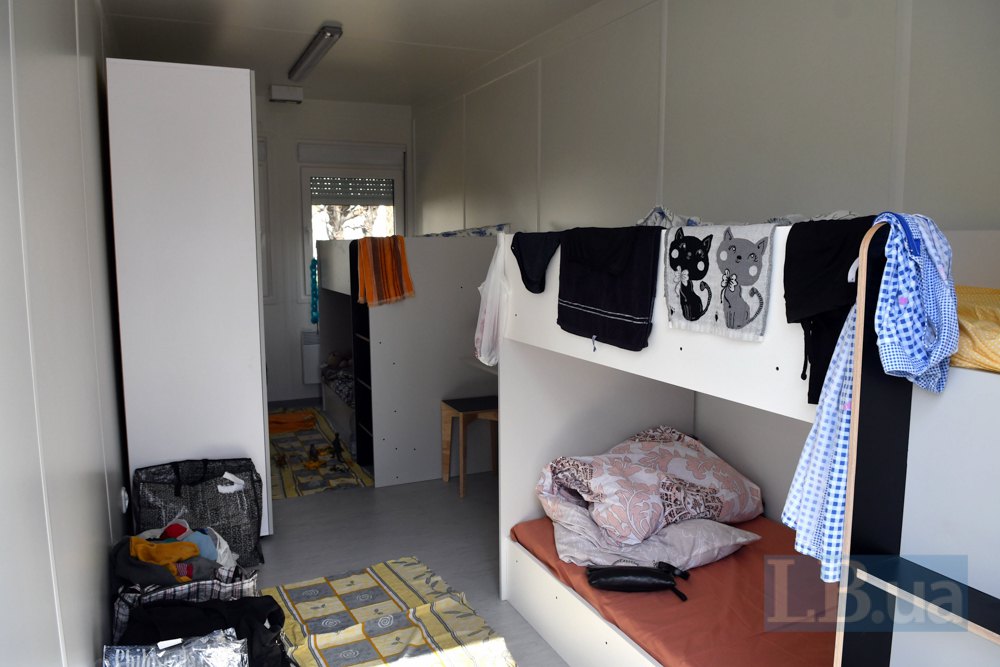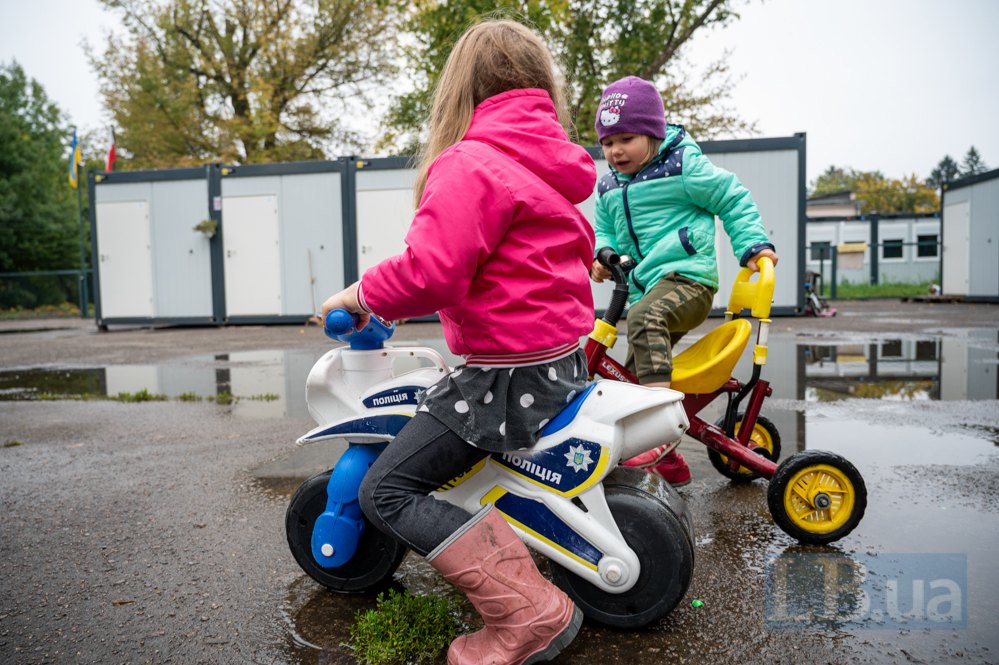Modular towns for IDPs began to appear in Lviv in late spring this year. On April 19, in Stryi Park, and on May 6, on Puluj Street. The last one was opened on May 19 in Sykhiv near John Paul II Park. Each one is designed to accommodate 300-350 people, all of them are built according to the same principle, from the same blocks, and, as a result, have the same problems.
This is stated in the an article by LB.UA.
In the summer, living in modular towns was like a camping vacation, but with the onset of cold weather, everyday life turns into a challenge. Running down the street to the shower and back, drying laundry in the rain, and dealing with humidity inside the room – these are the daily problems of about a thousand people living in three Lviv towns.
The construction of modular housing is a quick and relatively inexpensive way to provide minimum living conditions for a large number of people. In the spring of 2022, this solution was timely and relevant. Hundreds of IDPs were able to get a separate corner and move there from school gyms and other non-residential premises.
The standard room in the module is about 10 square meters, equipped with two bunk beds and several small lockers. Each house has electric heating. The room is designed for four people, but is often rented for a family. You can meet families who live in the module together, both two and six, with small children. On the chosen site, the houses are placed around the perimeter to create an internal space: it becomes an improvised courtyard for the community of neighbors. Each block (there can be two or three in the town) has showers and bathrooms, but the kitchen and laundry are shared by all sectors.



The first to be assembled was a town on the territory of Stryi Park. The modules were installed on an asphalt site, and as it turned out later, this was not a good decision. With the onset of the rainy season, residents found themselves surrounded by huge puddles. To overcome water obstacles, people lay out paths from paving slabs or use wooden pallets. They jump on them, going from room to shower and back again. Meanwhile, children use the puddles for entertainment.




However, this problem was noticed, and the Sykhiv town, which was built later, already had a drainage system for precipitation. However, the humidity inside the rooms remains one of the main drawbacks of all modular towns of this type.
Olena, a resident of Mariupol, has lived in the town on Sykhiv with her father since its opening. “We have electric heating. The only thing we can’t do is cope with the humidity. When it rains, and it rains in Lviv almost every day this fall, water flows down the walls, it is on the doors, windows, floor and, of course, on the beds. And it’s impossible to get rid of it. Wiping it off doesn’t help: you wipe it off, and it runs down the walls again. Moisture causes fungus to grow on mattresses and linen.”

Photo: provided by the heroine
Fungus on the mattress in Olena’s room

Photo: provided by the heroine
condensation in Olena’s room
IDPs in Stryi Park live in identical conditions. “The walls, the floor, the ceiling, and everything in the room is wet,” says Iryna. She lives in a standard module with her husband and mother. The family moved from Sievierodonetsk to Lviv in April, and at first they lived in the Polytechnic gym. Unlike Sykhiv, Stryi town has no drying machines, which creates another problem. The laundry has to be dried outside, regardless of the weather. The central part of the site is lined with dryers, which are used in turn. If your clothes don’t have time to dry, you still have to make room for the next ones.


The formation of condensation inside the modules indicates that the houses are not suitable for use in the cold season. The walls have poor thermal insulation, so it is almost impossible to cope with humidity. Of course, with the onset of frost, all the problems will get worse. The condensation will start to turn into frost, and there’s no telling what a normal trip to the shower will turn into.



The local authorities are aware of the situation, and they started discussing the problem at the municipal level in late summer. Lviv officials have announced the creation of another modular town adapted for winter conditions, which will accommodate people from the three existing locations. The residents learned about it from the media and hoped to move by October 1. However, no specific timeframe for the creation of the “winter” town has been announced so far.
The residents of the towns themselves are rather cautious about their everyday problems. They really appreciate having this shelter and agree to continue living in the conditions they have. The fungus in the rooms is nothing compared to what we experienced in Sievierodonetsk, Mariupol, or Kharkiv in the early spring of 2022.
Ivan Stanislavsky, Journalist (Mariupol)


Leave a Reply